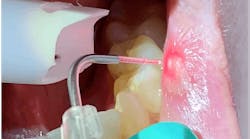Medical History Mysteries: Osteoporosis and dental treatment—bisphosphonates
Welcome to Medical History Mysteries, where we dissect our patients’ medical histories and figure out how best to treat them from the dental chair.
Last week we talked about patients who have osteopenia and osteoporosis, and what their medical history might look like.
In this episode, we’ll consider patients who have advanced forms of osteoporosis and are taking bisphosphonates. What do we need to know about bisphosphonate therapy in dentistry, what are the dental considerations, and how can dental professionals help mitigate some of the issues?
Bisphosphonates originated as drugs to treat bone cancer. They reduced bone turnover and were antiangiogenic. The problem is, some bones in the body need turnover (especially the mandible, maxilla, and femurs), and they rely heavily on blood supply. Bisphosphonates cause the jaw bones and femurs to accumulate constant microdamage to their inner architecture, and eventually those microfractures cause the bones to collapse. Sometimes osteonecrosis occurs, making infections more likely. But dental professionals can have a positive influence on the health of these patients.
More Medical History Mysteries videos:
- Osteoporosis and dental treatment—supplements and vitamins
- Waxes, dabs, and oils—oh, my! Cannabis extracts to be aware of
Editor’s note: This article first appeared in Through the Loupes newsletter, a publication of the Endeavor Business Media Dental Group. Read more articles and subscribe to Through the Loupes.







